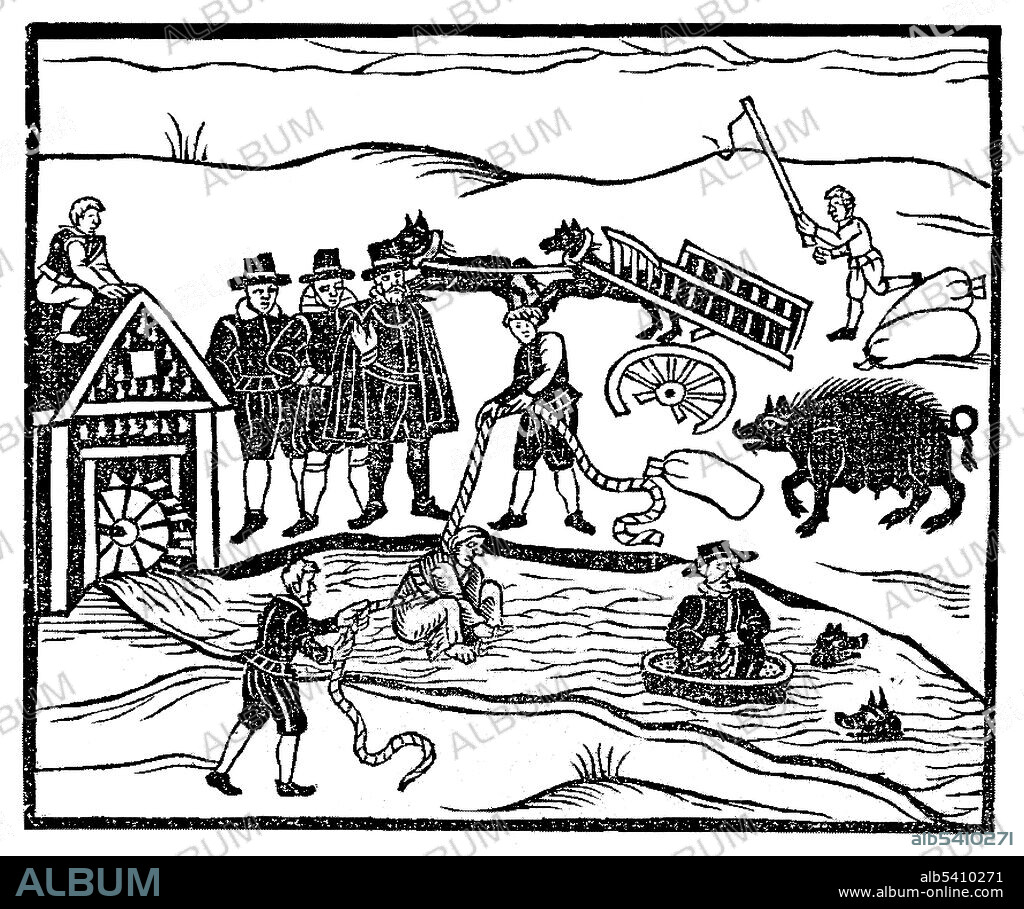alb5410271
Witch test, Ordeal by Water, 16th Century

|
Añadir a otro lightbox |
|
Añadir a otro lightbox |



¿Ya tienes cuenta? Iniciar sesión
¿No tienes cuenta? Regístrate
Compra esta imagen.
Selecciona el uso:

Título:
Witch test, Ordeal by Water, 16th Century
Descripción:
Ver traducción automática
Trial by ordeal was a judicial practice by which the guilt or innocence of the accused was determined by subjecting them to a painful, usually dangerous, experience. The test was one of life or death, and the proof of innocence was survival. Ordeal by water was later associated with the witch-hunts of the 16th and 17th centuries, although in this scenario the outcome was an accused who sank was considered innocent, while floating indicated witchcraft. The ordeal would normally be conducted with a rope holding the subject connected to assistants sitting in a boat or the like, so that the person being tested could be pulled in if he/she did not float. Some argued that witches floated because they had renounced baptism when entering the Devil's service.
Crédito:
Album / NYPL/Science Source
Autorizaciones:
Tamaño imagen:
4050 x 3387 px | 39.2 MB
Tamaño impresión:
34.3 x 28.7 cm | 13.5 x 11.3 in (300 dpi)
Palabras clave:
AGUA • ARTES • BLANCO Y NEGRO • BRUJA • BRUJERIA • BRUJO • CACERIAS • GRABADO EN MADERA • HECHICERIA • HECHICERO • HISTORIA • HISTORICO • MAGIA • NEGRO • PLANCHA DE MADERA • S. XVI • SIGLO XVI • SIGLO • TORTURADOR • XILOGRAFIA


 Pinterest
Pinterest Twitter
Twitter Facebook
Facebook Copiar enlace
Copiar enlace Email
Email
